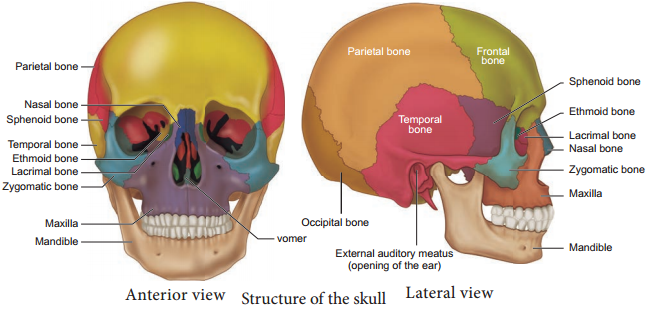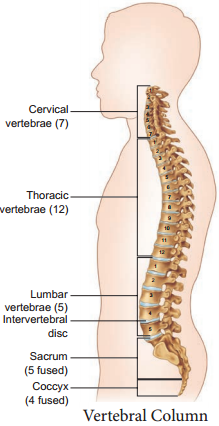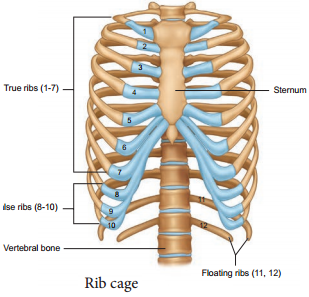Learninsta presents the core concepts of Biology with high-quality research papers and topical review articles.
The Skeletal System – The Axial Skeleton
Axial skeleton forms the main axis of the body. It consists of the skull, hyoid bone, vertebral column and thoracic cage.
(a) The Skull
The skull is composed of two sets of bones – cranial and facial bones. It consists of 22 bones of which 8 are cranial bones and 14 are facial bones (Figure 9.5). The cranial bones form the hard protective outer covering of the brain and called the brain box.
The capacity of the cranium is 1500 cm3. These bones are joined by sutures which are immovable. They are a paired parietal, paired temporal and individual bones such as the frontal, sphenoid, occipital and ethmoid.
The large hole in the temporal bone is the external auditory meatus. In the facial bones maxilla, zygomatic, palatine, lacrimal, nasal are paired bones whereas mandible or lower jaw and vomer are unpaired bones. They form the front part of the skull. A single U-shaped hyoid bone is present at the base of the buccal cavity.
It is the only one bone without any joint. Each middle ear contains three tiny bonesmalleus, incus and stapes collectively are called ear ossicles. The upper jaw is formed of the maxilla and the lower jaw is formed of the mandible. The upper jaw is fused with the cranium and is immovable.
The lower jaw is connected to the cranium by muscles and is movable. The most prominent openings in the skull are the orbits and the nasal cavity. Foramen magnum is a large opening found at the posterior base of the skull. Though this opening the medulla oblongata of the brain descends down as the spinal cord.

(b) The Vertebral Column
Vertebral column is also called the back bone. It consists of 33 serially arranged vertebrae which are inter connected by cartilage known as intervertebral disc (Figure 9.6). The vertebral column extends from the base of the skull to the pelvis and forms the main frame work of the trunk.
The vertebral column has five major regions. They are, the Cervical, Thoracic, Lumbar, Sacrum (5 sacral vertebrae found in the infant which are fused to form one bone in the adult) and Coccyx (4 coccygeal vertebrae found in the infant which are fused to form one bone in the adult).

Each vertebra has a central hollow portion, the neural canal, through which the spinal cord passes. The first vertebra is called as the atlas and the second vertebra is called as the axis. Atlas is articulated with the occipital condyles. The vertebral column protects the spinal cord, supports the head and serves as the point of attachment for the ribs and musculature of the back.
(c) The Sternum (Chest bone)
Sternum is a flat bone on the mid ventral line of the thorax. It provides space for the attachment of the thoracic ribs and abdominal muscles.
(d) The Rib Cage
There are 12 pairs of ribs (Figure 9.7). Each rib is a thin flat bone connected dorsally to the vertebral column and ventrally to the sternum. It has two articulation surfaces on its dorsal end, hence called bicephalic. The first seven pairs of ribs are called ‘true ribs’ or vertebro-sternal ribs.
Dorsally they are attached to the thoracic vertebrae and ventrally connected to the sternum with the help of hyaline cartilages. The 8th, 9th and 10th pairs of ribs do not articulate directly with the sternum but joined with the cartilaginous (hyaline cartilage) part of the seventh rib.
These are called ‘false ribs’ or vertebro-chondral ribs. The last 11th and 12th pairs of ribs are not connected ventrally. Therefore, they are called as ‘flating ribs’ or vertebral ribs. Thoracic vertebrae, ribs and sternum together form the ribcage. Rib cage protects the lungs, heart, liver and also plays a role in breathing.
